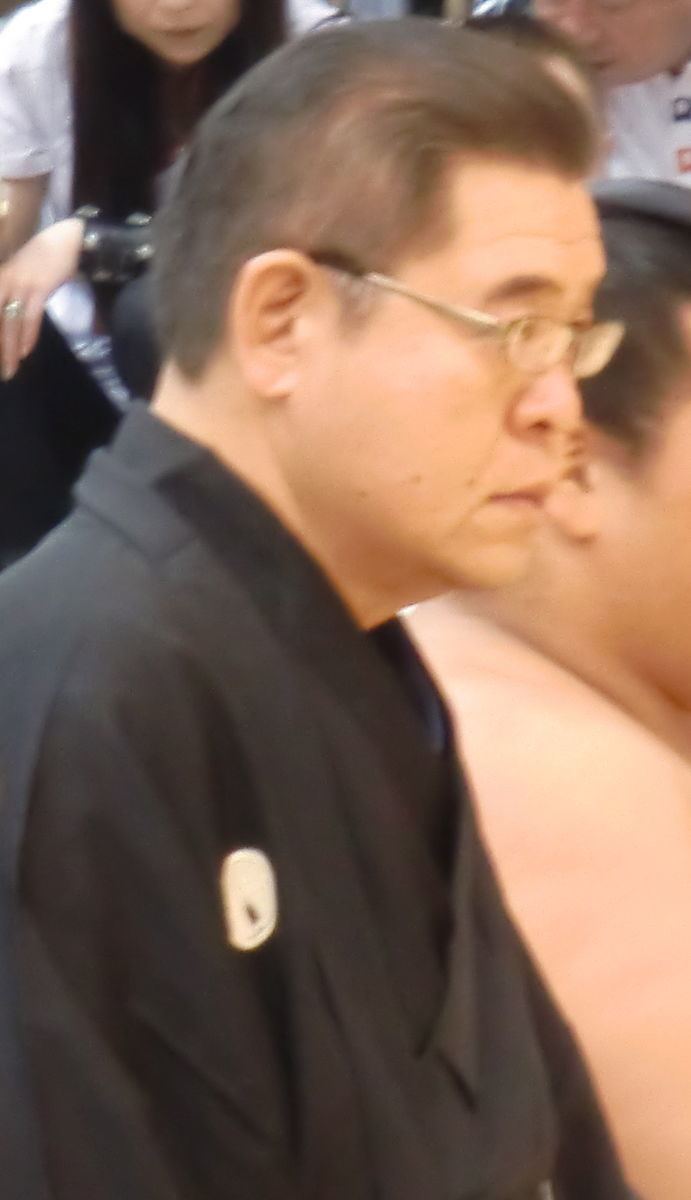Record 579-606-21 Retired November, 1990 Name Koboyama Daizo Makuuchi rank Sekiwake Weight 142 kg | Debut March, 1973 Special Prizes Technique (2) Role Sumo wrestler Height 1.79 m Career start March 1973 | |
 | ||
Highest rank Sekiwake (January, 1984) Stables Kumagatani stable (1982–1990), Takashima stable (1973–1982) Similar People Daijuyama Tadaaki, Tochitsukasa Tetsuo, Takamisugi Takakatsu, Kotogaume Tsuyoshi, Masurao Hiroo | ||
Kōbōyama Daizō (born 15 August 1957 as Kōkichi Yomogida) is a former sumo wrestler from Tsukidate, Kurihara, Miyagi Prefecture, Japan. He made his professional debut in 1973 and reached the top makuuchi division in 1981. His highest rank was sekiwake. He earned two special prizes for Technique and was a runner-up in one tournament. He retired in 1990. He is now a sumo coach and ran the Takashima stable from 1993 until 2011.
Contents
Career

He came from a family of beef cattle farmers. He was a Prefectural Junior School Sumo Champion.
He joined Takashima stable at the age of 15 in March 1973, recruited by former ōzeki Mitsuneyama. There were a large number of new recruits in that tournament because of a rule change. Also among them was the future top division wrestler Chikubayama. He made the juryo division in May 1981 at the age of 23. He reached the top makuuchi division for the first time in November 1981, although he was demoted back to juryo after three tournaments. In May 1982 he took part in a playoff for the juryo division championship or yusho and although he was defeated (he would never win a championship in any division) he was promoted back to the top division. He was transferred to Kumagatani stable in the same year upon the retirement of his stablemaster. He was runner-up to Chiyonofuji in July 1982, earning his first special prize for Technique. In November 1983 he won his second Technique prize and was promoted all the way from maegashira 7 to sekiwake, because of the failure of the men above him in the rankings to obtain winning records. This was to be his highest rank. He won only two bouts in this tournament and made the sanyaku ranks only one more time, at komusubi in September 1985. He struggled against the top ranked wrestlers, failing to defeat a yokozuna in 17 attempts, and beating an ozeki only twice in 35 attempts (Asashio and Hokutenyu once each). Nevertheless he was ranked in the top division for 42 straight tournaments from re-entering makuuchi in March 1983, before being finally demoted to the juryo division after the January 1990 tournament.
Koboyama served regularly as the tsuyuharai to Chiyonofuji for the yokozuna's dohyo-iri ceremony, even though the two were not members of the same stable or ichimon.
Retirement from sumo
Kōbōyama continued to fight in the jūryō division until November 1990, when he announced his retirement after demotion to the unsalaried makushita division was certain. His top division record was 312 wins to 344 losses with 16 absences, a winning percentage of .453. He became an elder of the Japan Sumo Association, and re-established the Takashima stable in 1993. The stable closed in June 2011 when its only remaining wrestler retired, and Takashima moved to Kasugayama stable to work as a coach there. He ran for a seat on the Sumo Association's board of directors in January 2016, but was unsuccessful. After the closure of Kasugayama stable in October 2016 he moved briefly to Oitekaze stable before transferring to Miyagino stable.
Fighting style
He liked pushing and thrusting techniques. Unusually, instead of favouring a right or left hand grip he specialised in moro-zashi, or using two hands inside his opponent's arms to grab the mawashi, and was fond of the rare kimarite or technique of tottari, the arm bar throw.
